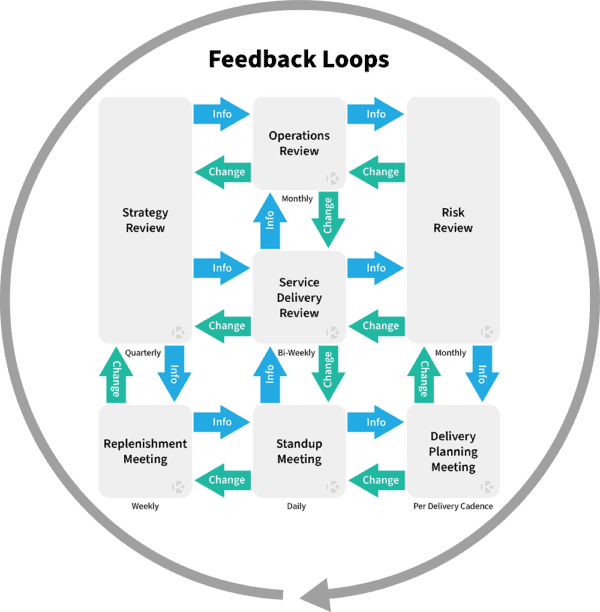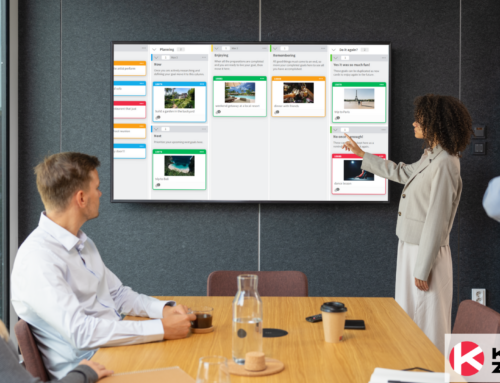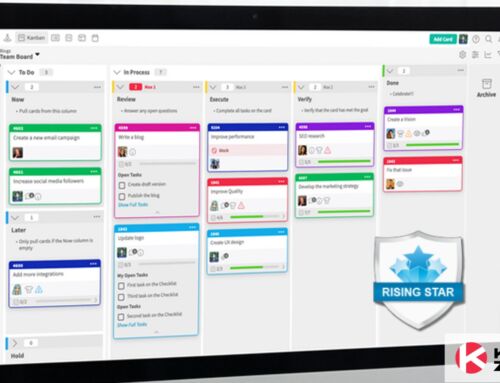
The Kanban basics are rooted in six principles: visualizing work, limiting works in progress, focusing on flow, making processes clear, improving continuously, and implementing feedback loops. All of these principles, when implemented successfully, will make success a possibility for any organization. To make all of these possible, communication is integral. Thus, the necessity of implementing Kanban feedback loops.
No matter what your position is in your organization, you will always want to be constantly kept in the loop about everything. This way, you get to understand your role and know what you have to do to help your organization succeed. Here are a few things that you need to know about Kanban feedback loops and why they are an important part of your organization.
What are Feedback Loops?
Feedback loops are methods being implemented by organizations to help boost the team’s productivity by improving certain processes, individual work performance, or team dynamics. By implementing feedback loops regularly, you can better identify areas in your organization that need improvement. These feedback loops can be done through a set of meetings with different cadences. Be it positive or negative, these feedback loops are essential in helping organizations grow and implement better business processes.
What are Kanban Feedback Loops?
Kanban feedback loops, or Kanban cadences, are the methods or approaches being implemented by an organization to drive continuous improvement on processes and operations. With these Kanban feedback loops, you can boost your productivity, improve your adaptability, and be a more agile team. Kanban cadences will help minimize the needs for long and strenuous monthly meetings since these feedback loops make it possible for your team to create an action plan more immediately.
Types of Feedback Loops in Project Management
There are three Kanban feedback loops or cadences that you can implement as part of the Kanban principles and practices you are following in your organization. These cadences will serve as your organization’s regular rhythm, helping you improve your project management and delivery process, and maintain consistency of output production. These Kanban feedback loops are as follows.
- Getting Things Done
- Doing Things Better
- Doing the Right Things
These three items can help you identify the right type of cadences to implement in the form of meetings, each of which will vary in purpose, length, and frequency. These seven Kanban cadences are as follows:

1. Standup Meeting
Ideal duration and frequency: 15 minutes, Daily
Purpose: From the term itself, this meeting is done with everyone on their feet to help participants stay mentally alert. This short meeting aims to help teams prepare for what lies ahead in the workplace, check how everything is going, and identify rooms for improvement, with a focus on tasks and activities to be done within the day.
2. Replenishment Meeting
Ideal duration and frequency: 30 minutes, Weekly
Purpose: This Kanban feedback loop is perfect to help teams manage backlogs and maintain a steady flow of deliverables across their Kanban board. During replenishment meetings, teams should focus on how each task or project can be accomplished, either by assigning additional team members on task cards or identifying what is needed to move tasks along the swimlanes.
3. Service Delivery Review
Ideal duration and frequency: 30 minutes, Bi-weekly
Purpose: This meeting aims to promote trust and improve an organization’s relationship with its customers. With the Service Delivery Review, you can be more transparent to your clients about your processes, understand what concerns they might have, and be able to prepare on how to handle these concerns. This cadence can help you assess what your clients want or need in relation to your deliverables.
4. Risk Review
Ideal duration and frequency: 1 to 2 hours, Monthly
Purpose: While other meetings focus on what needs to get done and what lies ahead, the Risk Review is done to help organizations identify factors that might affect the team’s productivity. During this meeting, teams should identify potential problems, such as backlogs and potential or current bottlenecks that may hinder the team from meeting deadlines and delivering quality outputs.
5. Delivery Planning Meeting
Ideal duration and frequency: 1 to 2 hours, Per deliver cadence
Purpose: When it comes to delivering your output to your clients, it’s important to plan the release date and identify all tasks that are still pending. Your team can use Delivery Planning meetings to improve your Kanban management system to make sure that problems are eliminated during the whole work process. This way, you get to be more efficient with handling your projects, and in the process, keep your customers highly satisfied.

6. Operations Review
Ideal duration and frequency: 2 hours, Monthly
Purpose: To be attended by managers from different departments in your organization, the Operations Review aims to analyze the overall processes being implemented within the organization. An essential part of the Kanban process improvement, organizations are encouraged to schedule Operations Review every month to help spot issues timely so as to avoid a ripple effect on the overall operations.
7. Strategy Review
Ideal duration and frequency: 4 to 5 hours, Quarterly
Purpose: The longest in duration among all the Kanban cadences, a Strategy Review is done to help organizations look at the bigger picture in terms of adapting to the changes in your industry and the needs within your organization. Among the Kanban basics, a Strategy review can help you design a roadmap for your business by coming up with various strategies and directions that your team members can follow.
The aim of utilizing these Kanban feedback loops is to help your organization achieve the continuous improvement that it needs in order to achieve efficiency and success.

Feedback Loops as Part of Your Kanban Process Improvement
The idea of implementing Kanban feedback loops in your organization may sound overwhelming, but you as a team leader and manager should gauge which of these cadences will be applicable to your current operations. These cadences are made to serve as a guide and a means of communicating process improvement needs across your organization. If you are using Kanban as a part of your project management tools, then you should also understand the importance of keeping your team in the loop in terms of what is happening in your organization.
To help you achieve better process efficiency, which can translate to better business revenue, you should look into organizing your communications and feedback loops. And to make it easier for you to gauge your need for Kanban feedback loops, try using a virtual kanban board such as Kanban Zone for your task and project management.
Learn to Work Smarter, Not Harder!
Get our top articles weekly.
Table Of Contents
Discover many more posts…







